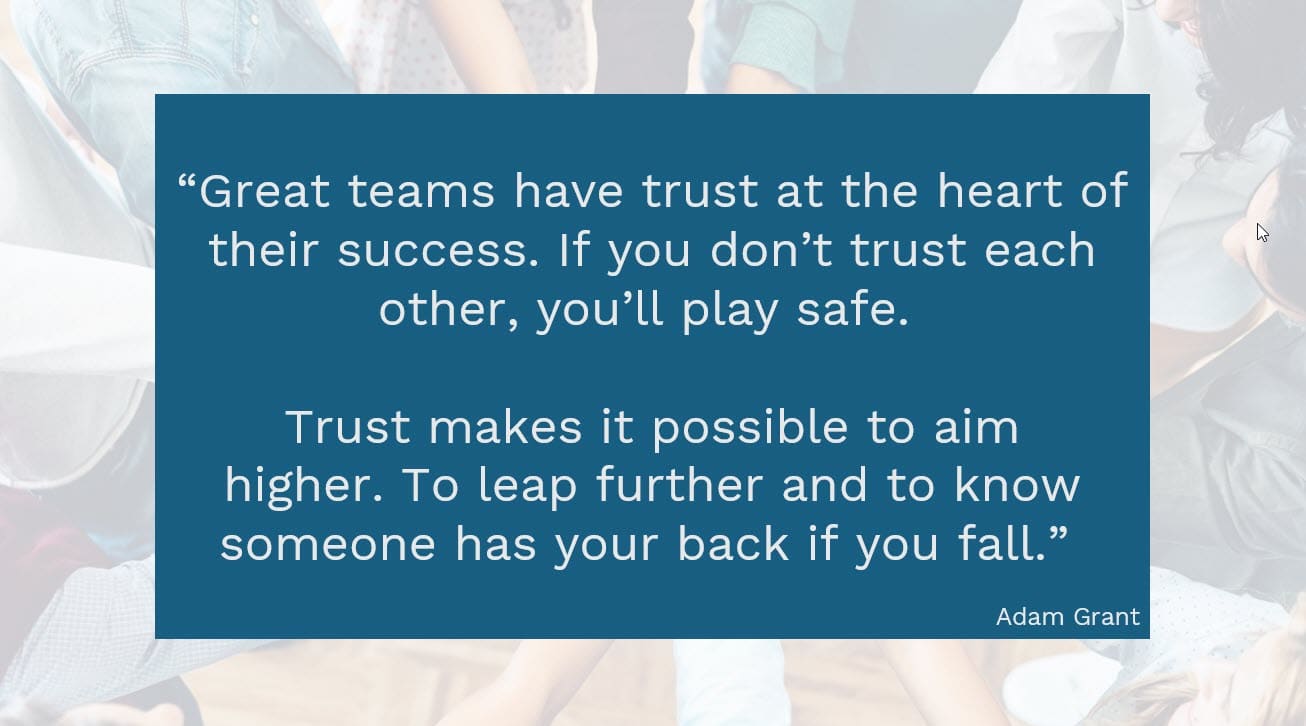You’re a visionary leader with a well thought-out strategy for growing the business. Yet, despite your best planning, that vision falls flat when it’s time for your team to deliver. Trust may be the missing component to increasing success.
It’s confounding and disappointing, but often, the problem comes down to employee buy-in. Without it, even the most promising strategies hit a wall of indifference, resistance, or lack of inertia.
Welcome to the Questions for Leaders Series, where we’ll break down some of the most common disconnects and offer ideas for improving buy-in.
Question 1: Do They Trust Me?

Trust is key to employee buy-in, and that buy-in is essential to the success of your business. Yet, many leaders fail to recognize the negative impact of a credibility gap. Consider these statistics from the MIT Sloan Management Review:
Your employees with high trust are 260% more motivated to work, have 41% lower absenteeism rates, and are 50% less likely to look for another job.
According to Gallup, only 21% of employees report trusting their organizations’ leadership, and the numbers are trending in the wrong direction.
It’s a bleak thought that 79% of employees don’t trust their leaders, but it’s also a tremendous opportunity.

Wouldn’t it be amazing if we could recapture even some of that missing trust? Imagine what your teams could accomplish!
We’ve established that trust matters, but how do your leaders earn it?
#1 – Be Visible
Are you accessible to employees at all levels? Do they see you out and about or only in the executive suite? Make an effort to be present, greet people, and show interest in their work.
#2 – Be Transparent
Do you share information openly? Explain the intent behind decisions and provide context for better understanding, be honest about challenges, and be forthcoming about lessons learned.
#3 – Be Flexible
Demonstrating a willingness to incorporate feedback and adjust the course builds trust in your fairness and sound judgment. I’m not advocating reversing your strategic direction, but rather suggesting you might gather feedback on impacts before locking in on a direction. Refining your plan slightly based on that feedback might be the key to an exponentially more successful outcome.
The Bottom Line – Create Trust and Find Success
Leadership is fundamentally about inspiring people. If your team doesn’t connect with you personally or believe in the path forward, even the most superb strategy may fail.
Next time, we’ll cover another vital question: “Do they understand the plan?” Until then, consider increasing your visibility, transparency, and flexibility factors. You may be surprised by the boost it provides to your strategic initiatives.



